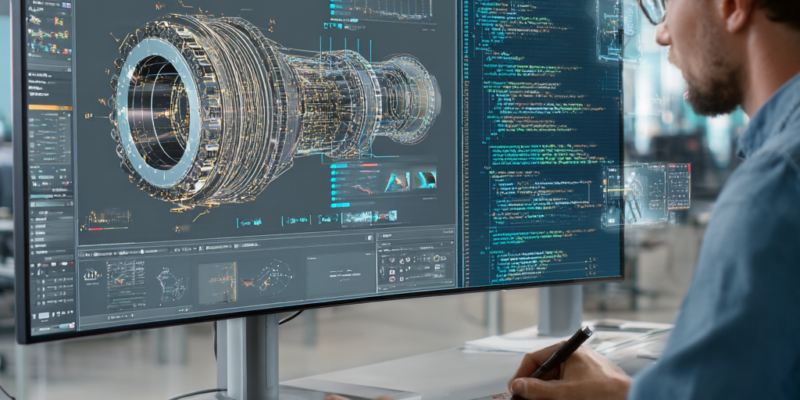For generations, engineers were defined by their mastery of the physical: the shape of a beam, the flow of a circuit, the aerodynamics of a wing. If you worked in mechanical or civil engineering, you sketched ideas on paper, refined them in CAD, and handed them over to manufacturing. Programming was seen as a separate discipline, something best left to software engineers.
But that boundary is dissolving fast.
Today, the most forward-thinking engineering teams blend design and code into a seamless workflow. Whether you’re optimising a structure, automating a simulation, or configuring a machine tool, knowing how to think like a programmer is becoming a core skill rather than a niche specialism.
This isn’t just a matter of convenience or curiosity. It’s about staying competitive in a world where automation, generative design, and digital twins are reshaping how we solve problems.
From Static Drawings to Dynamic Models
The traditional CAD approach treats geometry as a static asset: a set of drawings or files you update by hand. But modern tools, like Autodesk Fusion 360, Siemens NX, and Dassault Systèmes 3DEXPERIENCE, are increasingly scriptable. You can write Python scripts or use visual programming interfaces like Grasshopper (for Rhino) to automatically generate or modify geometry.
Imagine you need to create hundreds of variations of a component to optimise weight, cost, and manufacturability. Instead of redrawing each version manually, you can write code to generate them, run simulations automatically, and rank the results. What once took days becomes an afternoon’s work.
This mindset; thinking in algorithms, not just shapes, is the first step from CAD to code.
Automation: The New Productivity Multiplier
Many engineers already use macros or basic scripts to automate repetitive tasks. But more advanced programming unlocks much bigger gains:
- Batch Processing: Automate simulation runs or file conversions across entire assemblies.
- Data Integration: Link your CAD models to live data feeds (e.g., sensor data or material pricing).
- Design Rules: Encode company-specific standards into rule-based configurators.
For example, in building services engineering, it’s increasingly common to write scripts that generate HVAC layouts directly from architectural models. In mechanical design, automation can produce manufacturing-ready drawings as soon as a model is finalised.
By embracing code, engineers can free themselves from routine tasks and focus on the higher-value work of problem-solving and innovation.
The Rise of Generative Design and AI
Another reason to think like a programmer: the rise of generative design. Instead of modelling a part manually, you define the constraints and performance goals, then let software generate thousands of options.
Tools like Autodesk Generative Design, Siemens’ NX Topology Optimisation, and nTopology all rely on scripting, API integrations, and data pipelines to work effectively. Even AI-assisted design tools are only as good as the logic and data you feed them.
If you understand how to set up those inputs as a programmer, you can steer the process in a far more controlled, creative way.
A Mindset Shift, Not Just a Skillset
Learning to code doesn’t mean you need to become a professional software engineer. It means adopting a computational mindset:
- Thinking in workflows rather than single steps.
- Breaking problems down into repeatable sequences.
- Recognising patterns and automating them.
- Testing and iterating quickly.
This mindset is especially valuable in collaborative, multi-disciplinary teams, where integrating design, analysis, and production requires shared digital tools and clear data flows.
Getting Started
If you’re new to programming, start small:
- Learn a scripting language popular in your field; Python is widely supported across engineering platforms.
- Experiment with automating a simple task you do every day.
- Explore visual programming tools like Dynamo or Grasshopper to ease into computational thinking.
Most importantly, don’t wait for someone else to set up the workflow. The best engineers of the next decade will be those who combine deep domain expertise with the ability to build their own digital tools.
Conclusion
The old boundaries between designer, analyst, and coder are fading. Modern engineering demands agility: the confidence to create, test, and refine ideas using both CAD and code.
If you’ve been telling yourself, “I’m not a programmer,” it’s time to reconsider. The tools are more accessible than ever and the payoff is enormous.
Because when you learn to think like a programmer, you don’t just draw designs. You design the process itself. And that’s where the future of engineering lies.







